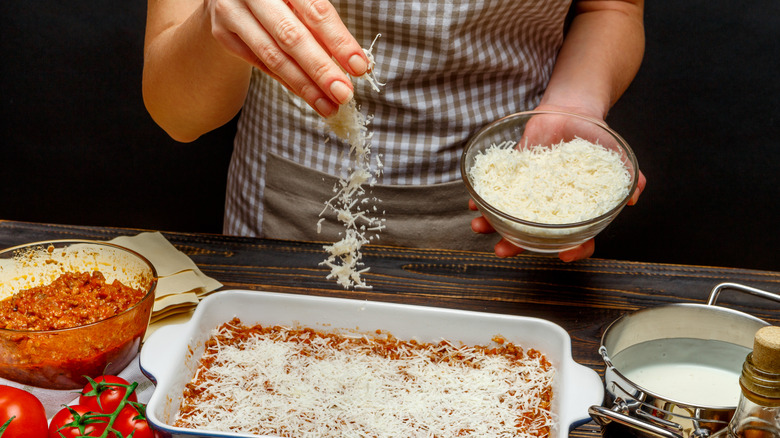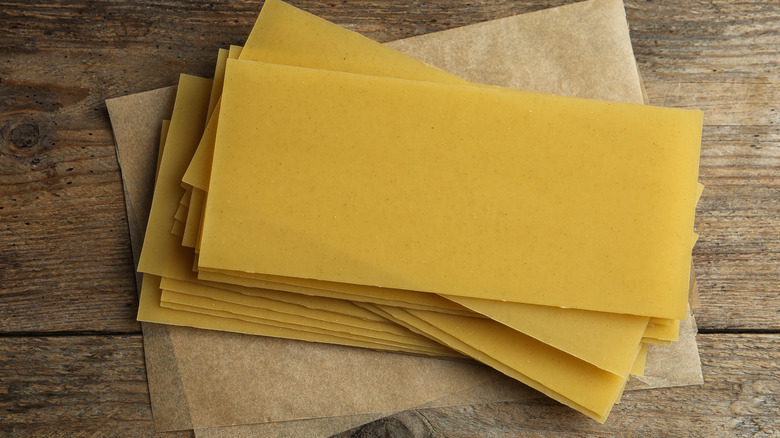Parchment Paper Is A Necessity When Making Lasagna Noodles Ahead Of Time
Cooking lasagna noodles ahead of time is a game-changer if you haven't got the bandwidth to assemble your dish immediately. But there's one necessary element you should never go without that makes this process run super-smoothly: laying parchment paper between your lasagna sheets.
As pasta boils, it releases a starch called amylopectin, which creates a viscous, gluey consistency on its surface. This means it's likely to stick together when cooked. Parchment paper eliminates this problem in two ways. Firstly, the non-stick nature of the parchment prevents the noodles from clinging together in a stack by creating a barrier between each lasagna sheet, making it impossible for them to clump together in a single sticky bundle.
Secondly, the parchment paper that's resting beneath each of the noodles makes it easy to peel off the sheets without tearing the delicate texture of the cooked pasta. This is useful if you're assembling all the key elements of a traditional lasagna, like a meaty ragu, creamy bechamel, and fresh mozzarella, into layers in a separate dish – simply lift each sheet off the paper and place it over your layer of sauce without worrying about any unsightly holes or rips. However, where this parchment trick particularly excels is if you're making other pasta dishes, like lasagna roll-ups because the paper catches any spills as you stuff and roll your par-cooked noodles. You can even cut your noodles into smaller pieces while they cool on the paper, to throw into a deconstructed lasagna soup later.
Layer the parchment paper between the lasagna noodles
To guarantee your cooked lasagna noodles don't stick together, place them on a piece of parchment paper on your countertop in a single layer. If you're prepping a large number of lasagna sheets but are short on space, you can stack them up over a smaller surface area. All you have to do is place a second sheet of paper on top of the first layer of cooked pasta and put more parboiled noodles on top. You can continue this layering process until you've prepped all of the pasta. You may prefer to lay the parchment on a baking tray, instead of the counter, so you can transport the noodles around the kitchen easily. This way you can also place the tray elsewhere to free up your counter space until you're ready to assemble.
If you change your mind along the way about the precise Italian dish you want to make, you can use the cooked lasagna sheets to make perfect cannelloni noodles. Just discard the messy parchment paper you've placed underneath them when you're done stuffing them with your scrumptious filling to make clean-up easier. And if you end up with some unused pieces, snip the sheets into triangles and deep fry them for lasagna noodle tortilla chips.

